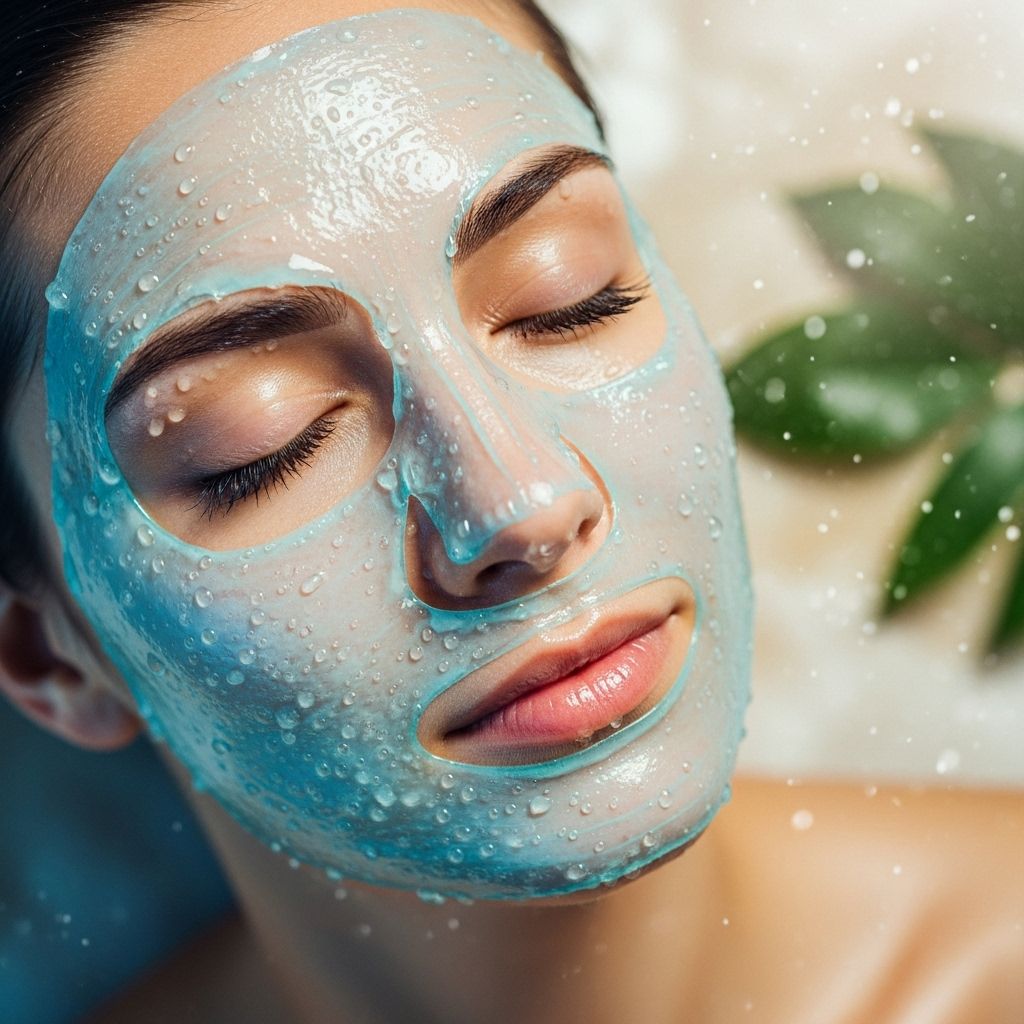Hydrotherapy Masks: Impact on Facial Microcirculation
A soothing hydrogel barrier that locks in hydration and calms skin for a refreshed look.

Table of Contents
- Introduction to Hydrotherapy Masks
- What Are Hydrotherapy Masks?
- Types of Hydrotherapy Masks
- Effect on Facial Microcirculation
- Benefits of Hydrotherapy Masks
- Frequently Asked Questions
Introduction to Hydrotherapy Masks
Hydrotherapy masks are a relatively new addition to the world of skincare, offering a unique approach to improving skin health and appearance. These masks are designed to enhance facial microcirculation, which is crucial for delivering nutrients and oxygen to the skin cells, thereby promoting healthy and radiant skin.
What Are Hydrotherapy Masks?
Hydrotherapy masks, often referred to in the context of hydrojelly or hydrogel masks, are made from ingredients like alginate or hydrogel. They work by creating a cooling and soothing effect on the skin, which can help in reducing puffiness and improving skin texture. These masks are infused with electrolytes and are known for their ability to lock in moisture, promoting better hydration and skin health.
Key Components of Hydrotherapy Masks
The primary components of these masks include:
- Alginate: Found in brown algae, alginate is known for its skin-soothing properties and ability to form a protective barrier.
- Electrolytes: Such as potassium, magnesium, and sodium, which help in maintaining the skin’s moisture balance.
- Hydrogel Matrix: Acts as an occlusive layer to prevent moisture loss and enhance ingredient absorption.
Types of Hydrotherapy Masks
There are several types of hydrotherapy masks, but the most common are hydrojelly and hydrogel masks.
Hydrojelly Masks
Hydrojelly masks are known for their unique ability to create a vacuum-like seal on the skin, which helps in pushing nutrients deeper into the skin. They are often used in professional settings to enhance the effects of other treatments such as microdermabrasion. These masks are beneficial for dehydrated or troubled skin and provide a cooling sensation.
Hydrogel Masks
Hydrogel masks are made from a gel-like material that conforms closely to the skin, providing a high concentration of moisture and active ingredients. They are effective in reducing puffiness and enhancing skin hydration, resulting in smoother and more radiant skin.
Effect on Facial Microcirculation
Facial microcirculation refers to the flow of blood in the small vessels of the facial skin. Improved microcirculation is essential for delivering oxygen and nutrients to the skin cells, which can enhance skin health and appearance. Hydrotherapy masks, by promoting hydration and reducing inflammation, can indirectly support better microcirculation.
How Hydrotherapy Masks Impact Microcirculation
- Cooling and Soothing Effect: The cooling sensation provided by these masks can help reduce inflammation and promote better circulation.
- Hydration Enhancement: By locking in moisture, hydrotherapy masks can improve skin elasticity and potentially enhance blood flow.
- Occlusive Layer: The hydrogel matrix or alginate layer helps prevent moisture loss, creating an environment that supports healthier skin, which in turn can promote better circulation.
Benefits of Hydrotherapy Masks
Hydrotherapy masks offer several benefits for the skin, including:
- Hydration and Moisture Retention: They effectively lock in moisture, leaving the skin feeling soft and supple.
- Soothing and Calming: The cooling effect helps soothe irritated skin and reduce inflammation.
- Non-invasive: These masks are a safe and gentle way to achieve better skin health without causing damage.
- Exfoliation and Skin Conditioning: Some hydrotherapy masks can help remove dead skin cells and condition the skin for a smoother texture.
Frequently Asked Questions
Q: Are hydrotherapy masks suitable for all skin types?
A: Yes, hydrotherapy masks, such as hydrojelly and hydrogel masks, are generally suitable for all skin types, including sensitive skin, due to their soothing and non-invasive nature.
Q: How often should I use a hydrotherapy mask?
A: The frequency of use can vary depending on your skin type and concerns. Typically, using a hydrotherapy mask once or twice a week can help maintain healthy and hydrated skin.
Q: Can hydrotherapy masks help with facial microcirculation directly?
A: While hydrotherapy masks may not directly target microcirculation, they can indirectly support it by improving skin health and hydration, which can enhance blood flow and nutrient delivery to the skin.
Read full bio of Sneha Tete












